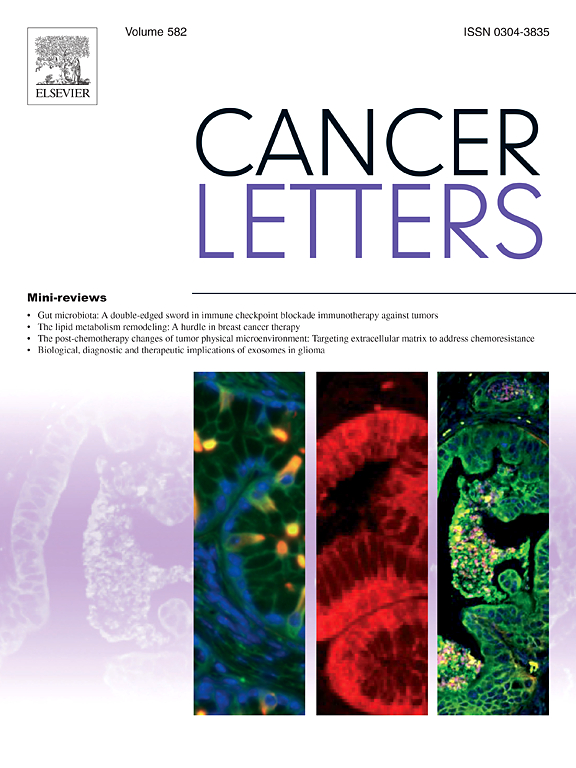Characterization of novel mouse esophageal squamous cell carcinoma cell lines and their utility as preclinical models
IF 9.1
1区 医学
Q1 ONCOLOGY
引用次数: 0
Abstract
Esophageal squamous cell carcinoma (ESCC) has a high incidence, poor treatment response, and high mortality. Subcutaneous transplant tumor models are commonly used to study the immunosuppressive tumor microenvironment and its impact on immunotherapy. In this study, we established two new ESCC mouse cell lines, mEC525M and mEC586F, from 4NQO-induced ESCC mouse models of different sexes. We compared their proliferation, motility, and molecular characteristics with existing lines (HNM007, AKR, mEC25) using in vitro experiments and whole-exome sequencing. Treatment sensitivity analysis of all murine ESCC tumor cell lines revealed that AKR and HNM007 cells were more responsive to chemotherapy, mEC25 cells were more sensitive to radiotherapy, whereas mEC525M and mEC586F cells exhibited greater sensitivity to immunotherapy. Multiplex immunohistochemistry (mIHC) staining analysis revealed differences in immune infiltration among the tumors derived from the five mouse ESCC cell lines, with the highest proportion of T cells in mEC525M tumors, the highest proportion of CD11b+ myeloid cells in mEC586F tumors and the highest proportion of CD19+ B cells in mEC25 tumors. In addition, RNA sequencing results also revealed differences in immune responses exhibited by tumor tissues derived from the five mouse ESCC cell lines after anti-PD1 treatment. Therefore, this study offers a valuable tool for investigating the immune microenvironment in ESCC and supports the selection of mouse models for preclinical ESCC research.
求助全文
约1分钟内获得全文
求助全文
来源期刊

Cancer letters
医学-肿瘤学
CiteScore
17.70
自引率
2.10%
发文量
427
审稿时长
15 days
期刊介绍:
Cancer Letters is a reputable international journal that serves as a platform for significant and original contributions in cancer research. The journal welcomes both full-length articles and Mini Reviews in the wide-ranging field of basic and translational oncology. Furthermore, it frequently presents Special Issues that shed light on current and topical areas in cancer research.
Cancer Letters is highly interested in various fundamental aspects that can cater to a diverse readership. These areas include the molecular genetics and cell biology of cancer, radiation biology, molecular pathology, hormones and cancer, viral oncology, metastasis, and chemoprevention. The journal actively focuses on experimental therapeutics, particularly the advancement of targeted therapies for personalized cancer medicine, such as metronomic chemotherapy.
By publishing groundbreaking research and promoting advancements in cancer treatments, Cancer Letters aims to actively contribute to the fight against cancer and the improvement of patient outcomes.
 求助内容:
求助内容: 应助结果提醒方式:
应助结果提醒方式:


